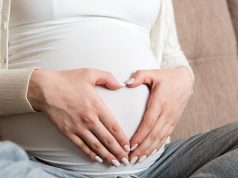Weight-based dosing more effective than BMI-based dosing for venous thromboembolism prophylaxis
FRIDAY, May 29, 2015 (HealthDay News) — Weight-based dosing of enoxaparin is more effective than body mass index (BMI)-based dosing for venous thromboembolism prophylaxis among morbidly obese women after cesarean delivery, according to a study published in the June issue of Obstetrics & Gynecology.
Rachael T. Overcash, M.D., M.P.H., from the University of California, San Diego, and colleagues conducted a prospective sequential cohort study involving women with BMI of 40 kg/m² or greater who underwent cesarean delivery. Participants were randomized to weight-based (42 women) or BMI-stratified (43 women) enoxaparin dosing to prevent venous thromboembolism formation.
The researchers found that the weight-based group had significantly higher concentrations of anti-Xa compared with the BMI-stratified group (0.29 ± 0.08 versus 0.17 ± 0.07 international units/mL). Eighty-six percent of the weight-based dosing group and 26 percent of the BMI-stratified dosing group had anti-Xa concentrations within the prophylactic range. None of the patients met the threshold for venous thromboembolism prophylaxis (anti-Xa concentration of 0.6 international units/mL or greater).
“In morbidly obese women after cesarean delivery, weight-based dosing of enoxaparin for venous thromboembolism prophylaxis is significantly more effective than BMI-stratified dosing in achieving adequate anti-Xa concentrations,” the authors write.
Full Text
Copyright © 2015 HealthDay. All rights reserved.








